
A blurb is one of those things that all fiction authors need but most of us hate to write. Condensing our 50-, 80-, or 100-thousand-word book down to between 100 and 200 words sounds like an impossible task. Yet many authors and copywriters write compelling blurbs regularly. So, how do they do it?
The first step is realizing that novel writing and blurb writing are not the same thing. In fact, blurb writing, like synopsis writing, is much closer to copywriting than it is to novel writing. In order to learn how to write a blurb effectively, we must first know what a blurb is, its purpose, what needs to be included, and how to put it all together (the parts of a blurb).
What is a Blurb?
A blurb is, first and foremost, a marketing tool. It is a promise to the reader of what to expect from the story.
![]()
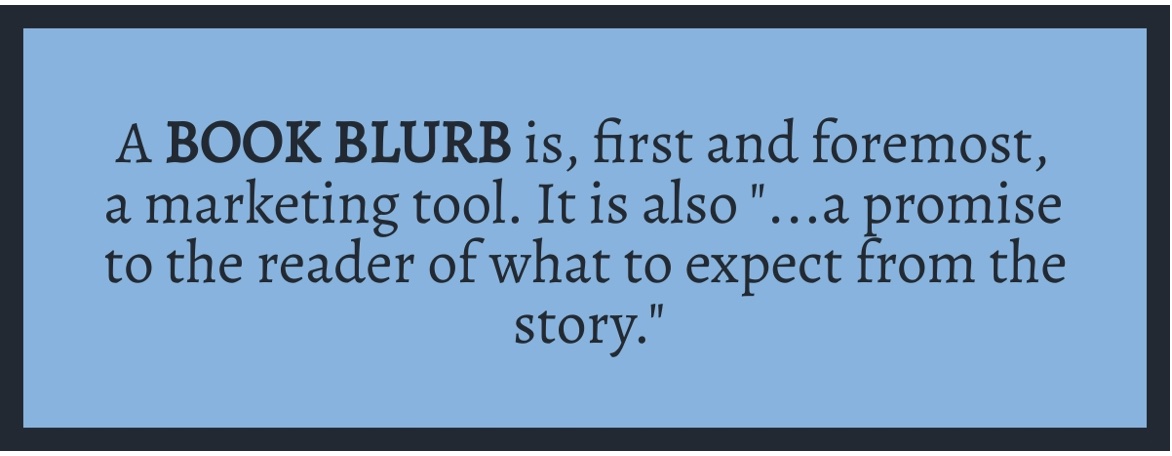
![]()
Blurb Definition
As a noun, a blurb is a brief description of a book or film.
As a verb, blurb refers to the process of writing a blurb for a book or film.
Blurb Meaning
A blurb is a very brief, 100-to-200-word (on average, depending on genre) overview of your story that presents the main characters, the main conflict or story problem (protagonist’s goal), and what’s at stake. It leaves the reader with a cliff-hanger, meant to entice them to read the book to find out what happens.
What Is a Blurb in a Book?
In a book, a blurb is a short description that is designed to persuade potential buyers to purchase and read. There are a few different places that you will need to have a book blurb, including:
- The back cover of the print book: After your cover entices the reader to look at the blurb, your blurb will then, in turn, convince them to open the book to find out more.
- Your Amazon (or other online booksellers) book sales page: The blurb’s job is to entice your reader to click the ‘Buy’ button to purchase and read your book. It does this by giving readers just enough information to let the reader know this is their kind of book without giving too much away.
- In your query package along with the synopsis and other required documents to help convince the agent and/or publisher that you have a complete story that will sell. In can also be used as part of an award entry package or grant application package.
- In Amazon Ads, Facebook Ads, etc.: Your blurb, or parts of it (in particular, your hook), can be used as ad copy on paid advertising sites.
- In other marketing and promotional materials, such as social media headers and posts in the time leading up to the launch of your book, and materials used in continuing promotions after the launch.
What Needs to be Included in a Blurb?
A blurb needs to include the following:
- Protagonist: The blurb should be more about character—in particular, the protagonist—than plot. It should play on readers’ emotions, and much of that has to do with whether or not they can relate to the protagonist.
- Story Problem: What is wrong in the story world? What is your protagonist’s goal, and what obstacles are standing in the way? In other words, what is the conflict?
- What’s at stake: What does the protagonist have to gain by reaching the story goal, and what do they stand to lose by not achieving their goal? The higher the stakes, the more readers’ emotions are evoked, and the more invested they are in the story.
The Parts of a Book Blurb
- The hook (also known as the headline, logline, or tagline) is the very first sentence or two of your blurb. This needs to be the most intriguing, engaging, attention-grabbing part of your blurb. It needs to convince the reader to read the rest of the blurb, therefore, it is the most important part of the blurb.
Example:
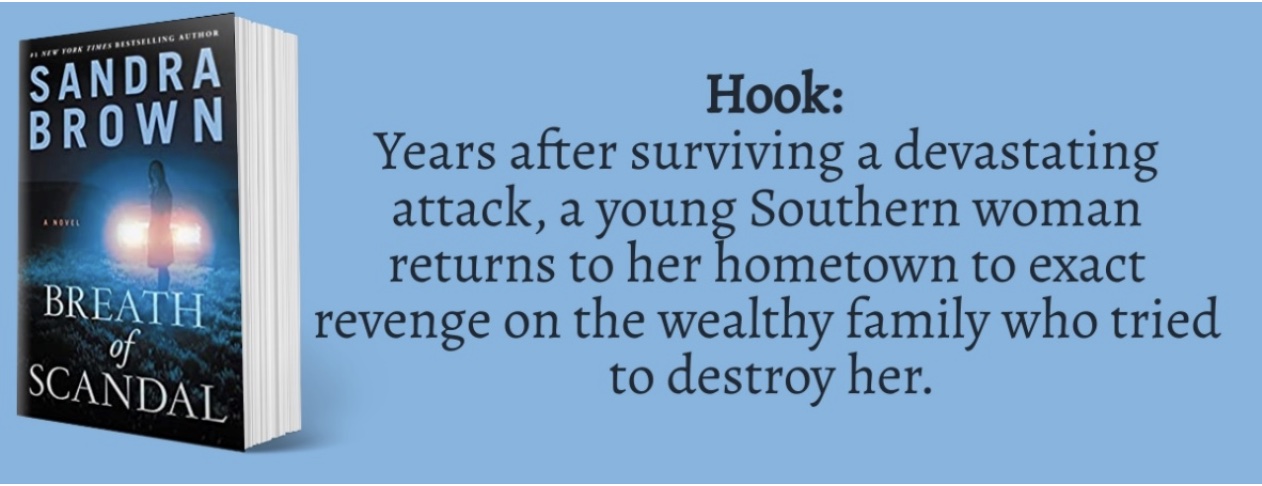
![]()
Other Examples of Hooks:
![]()
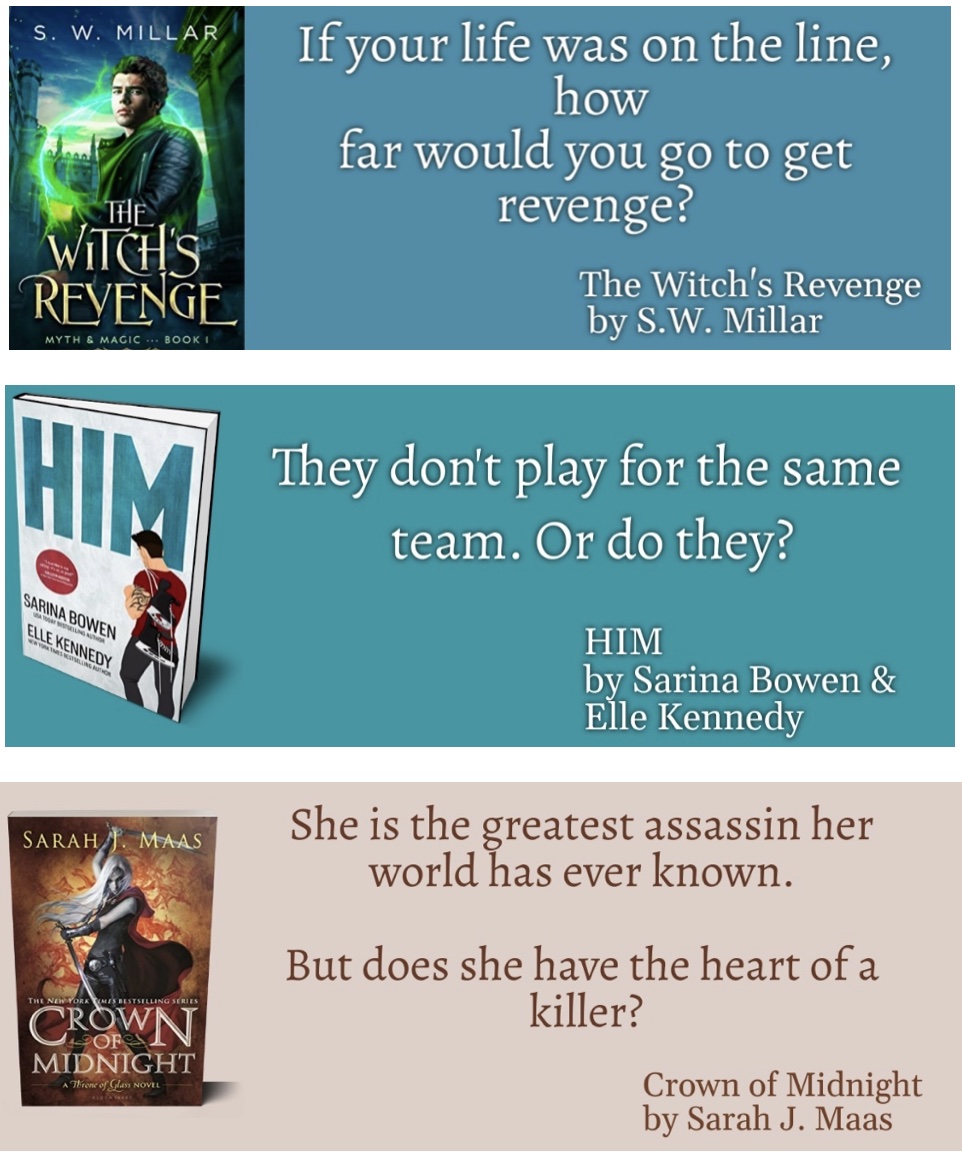
- Brief overview of the story: This gives a general discussion of the central character(s), the central conflict, and the stakes.
![]()
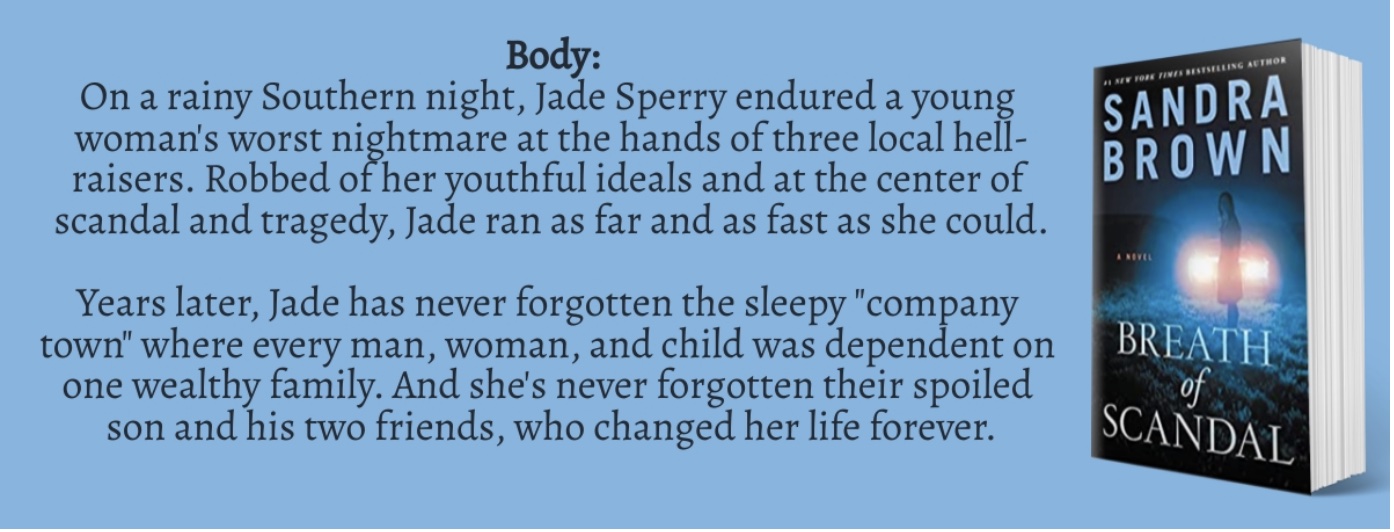
![]()
- A strong final sentence: This is the mic drop moment.
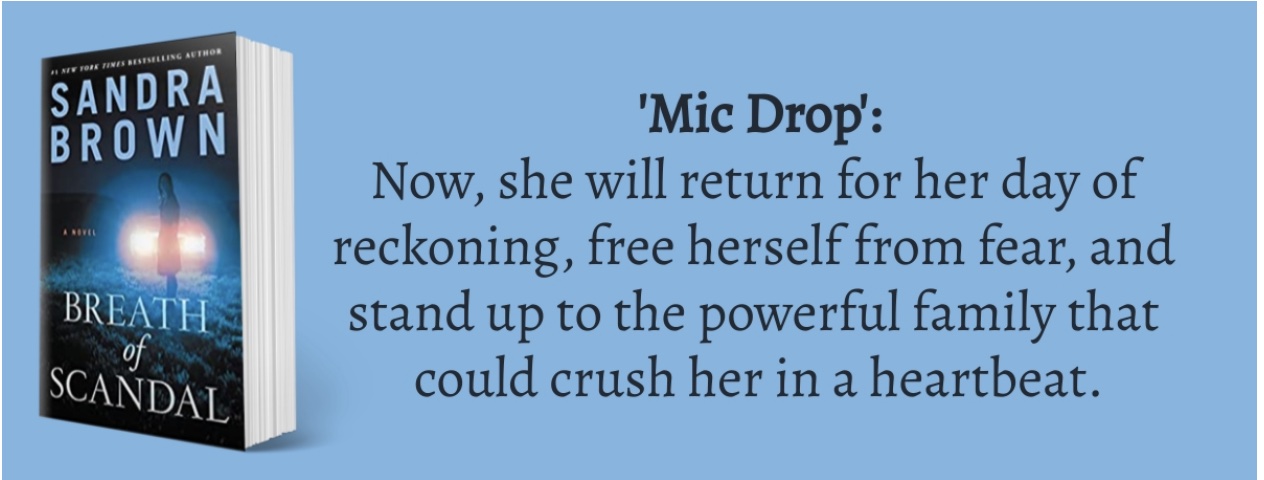
![]()
This final sentence leaves the reader asking questions. What is Jade planning to do? Can one woman defeat a powerful family, or will they destroy her? The readers will only find the answers to these questions by reading the book.
- A comparative statement: This is an optional component, but a good idea to include on your book sales page. This is a statement like, “If you like (name of well-known book), then you’ll like (name of your book).” If you use this, be honest. Readers will not be appreciative if they read your book only to discover it was nothing like the book you compared it to.
- A call to action: This is another element that is optional, but really should be included on your book sales page and marketing and promotional materials. This is a statement that asks the reader to act, such as, “Buy (name of your book) today to join the quest!”
8 Tips for Writing a Blurb
- Use the present tense, 3rd person to make the description feel more immediate. Exceptions to this include if you are writing a sentence in the main character’s voice as a hook (or two sentences if you are writing a dual POV romance), for example.
- Keep your paragraphs short. This helps with pacing, as it will feel faster and more exciting. It also enhances readability.
- Vary your sentence length: You want your blurb to flow well, but you don’t want it to sound like a lullaby. It should feel exciting to the reader, not nap-inducing, and varying sentence length and type will help.
- Make every word count: You don’t have many words to work with in your blurb, so make sure each one counts. Use strong, active verbs and exciting, descriptive adjectives. Make the words you choose serve more than one purpose whenever necessary.
- Pay attention to the flow/sound: Read your blurb aloud. Does it flow well? Does it sound exciting? Are there verbs or adjectives that you could replace with stronger ones that will have a greater impact? Are there too many similar length sentences?
- Write 15 to 20 hook/headlines/taglines, choose the top two or three, then ask family member, friends, members of writers’ communities or writers’ groups that you are part of for their opinion.
- Write 5 to 10 blurbs (the body of the description): Again, choose the top two or three, then ask others for their feedback.
- Read the book descriptions for other books in your genre, especially recent releases, for ideas and to see what is trending in your genre.
All of this information might seem overwhelming at first. But writing your blurb should not be complicated. If you follow the advice above and keep practicing, you will soon find that it becomes easier and easier.


